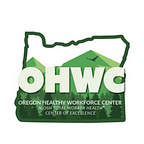Looking for ways to support your employees? Start with work-life balance
During this past year, with the pandemic, civil unrest, and race-targeted violence, we have appreciated our supervisor’s support more than ever. As example of this support is our daily virtual team check-ins; these begin with “how is everyone doing today”, move into a discussion of the day’s work agenda, and end with updates from our home life, and sometimes, talking about society’s events that bring us joy and sadness. There’s been a lot of the latter lately but like many, we tend to draw comfort from our shared experiences, find silver linings and reasons to laugh a little.
How we live and interact with the world has changed dramatically, and workplaces have had to significantly and quickly adapt to these changes. Compounding this situation is a sharp rise in stress and mental health concerns. All these factors point to important questions regarding the future of work and how it can all impact our lives. If there’s one pressing observation about the world of work, it’s that keeping the workforce safe, healthy, and well is critical.
So where do we begin? Occupational health scientists find that a good place to start would be to ask how workplaces can better support their employees during challenging times.
Although the value of positive workplace culture and good leadership are fairly well-recognized, now would be a good time to walk the talk. For example, the sudden switch to working from home brought with it a rapid fusion of our work and home lives. Have you had to juggle work meetings with home schooling your kids? Do you regularly take work-related video calls in your kitchen? Have you ever needed a change of scene because your home is your workplace and the lines between work and family are just so blurry?
Research has shown that managers and supervisors supporting their employees in areas of both work and home life have shown improvements in employee health outcomes such as physical health, and sleep quantity and quality. Evidence-based supervisor trainings and strategies such as positive leadership behavior tracking are useful in reinforcing the practice of providing work-life support (resources in this sentence are linked to resources from www.YourWorkpath.com).
For us, it turns out that a simple daily check-in with our supervisor and co-workers helps us stay engaged with work, draw support from our team, and cope better with these unsettling times.
Here are some tips from researchers with expertise on how workplace supervisors and managers across industries can better support their employees through the lens of Total Worker Health®, a holistic approach developed by the National Institute for Occupational Safety and Health (NIOSH) to advance and improve workplace safety, health, and well-being.
Creative Management, Daily Job and Personal Problem Solving
·Be receptive to employees’ suggestions of how to schedule work and personal needs.
· Creatively work together to problem solve with your employees to help meet their work-life and home-life demands.
· Jointly discuss how work can be carried out safety, remotely, and flexibly.
Emotional Support
· Show concern and interest in your employee’s well-being.
· Consider their feelings, and reiterate that they are cared for.
· Follow up with employees on important personal events and recognize their efforts.
Model Healthy Behaviors
· Share a story about how you juggled both work and home life;
· Share your own experiences with new ways of organizing work tasks and priorities around family or personal needs (e.g. doctor appointments, taking vacation time, etc.)
Safety Support
· Discuss safety practices with employees often, prioritize these during meetings, and encourage employees to use proper equipment.
· Encourage employees to bring up safety concerns and ask and show them support when they need it.
Provide Resources
· Provide employees with extra time and flexibility needed to get their job done.
· Provide and/or connect employees with trainings, equipment, software, and other resources that can help them stay healthy, safe, engaged and productive.
*Supportive supervision strategies were adapted from research on Family Supportive Supervisor Behaviors (FSSB) and Safety Health Improvement Program (SHIP) conducted by experts in occupational health psychology.
Download a copy of the Supportive Supervisor Behaviors Tip Sheet to post at your desk, share with a colleague, and use as part of your daily work routine when interacting with employees. The Supportive Supervisor Behaviors Tip sheet is part of the Safety and Health Improvement Program developed at our center, Oregon Healthy Workforce Center, a Center of Excellence for Total Worker Health® which offers free online supportive supervisor training, two weeks of behavior tracking, and a Follow-Up Guide to reinforce supportive supervisor behaviors in the workplace. Additional workplace programs and resources to improve safety, health and well-being can be found at YourWorkpath.com.
Check out our other Medium.com articles on workplace safety, health, and well-being.
Article by: Helen Schuckers, MPH, Dissemination Specialist and Anjali Rameshbabu, PhD, Center Manager at Oregon Healthy Workforce Center housed at the Oregon Institute of Occupational Health Sciences at OHSU
This work was supported by the Oregon Healthy Workforce Center, a National Institute for Occupational Safety and Health (NIOSH) Total Worker Health Center of Excellence [grant number U19OH010154]. This work was also partly supported by the Oregon Institute of Occupational Health Sciences at Oregon Health & Science University via funds from the Division of Consumer and Business Services of the State of Oregon (ORS 656.630).
